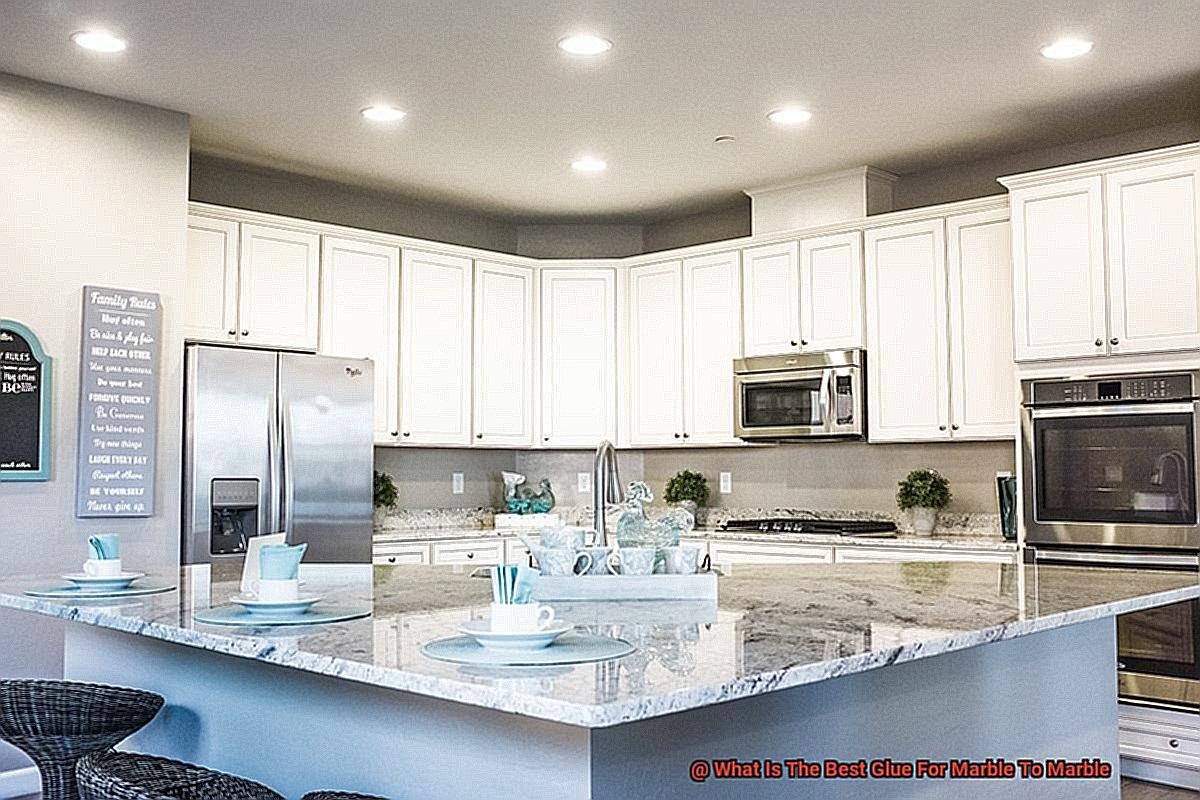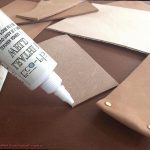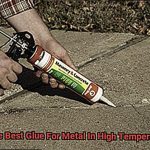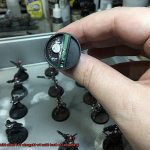You’ve got a stunning marble masterpiece in mind, or maybe you’re just trying to mend that unfortunate crack in your beloved marble countertop. Either way, finding the perfect glue for bonding marble to marble is absolutely crucial.
But let’s face it – navigating through the vast sea of adhesive options can be overwhelming. Don’t worry though, because we’re here to save the day.
We’ve dived headfirst into the world of marble bonding and emerged with all the insider knowledge you need. Get ready to discover the holy grail of adhesives that will keep your marble surfaces flawlessly intact for years to come.
So, grab a seat and let us be your trusty guide on this epic journey towards seamless adhesion perfection.
What is Marble?
Contents
- 1 What is Marble?
- 2 Why Use Adhesive for Marble?
- 3 What is the Best Glue for Marble to Marble?
- 4 Benefits of Epoxy Resin for Marble
- 5 Benefits of Polyurethane Adhesive for Marble
- 6 Preparing the Marble Surfaces Before Glue Application
- 7 Testing the Adhesive on a Small Area of the Marble
- 8 Factors to Consider When Choosing an Adhesive
- 9 Conclusion
Marble, a metamorphic rock born from the depths of the earth, has captivated humanity with its timeless beauty and elegance for centuries. From ancient sculptures to modern architectural masterpieces, marble has been a symbol of prestige and sophistication.
In this comprehensive exploration, we will delve into the captivating world of marble, uncovering its formation, unique characteristics, practical uses, and historical significance.
Formation and Composition:
Marble is the result of limestone undergoing a remarkable metamorphosis deep within the Earth’s crust. Under immense heat and pressure, the calcium carbonate present in limestone transforms into marble’s exquisite form.
This process imbues marble with its signature veining patterns and lustrous appearance. While white or light-colored varieties are most common, marble also adorns itself in a stunning array of hues including black, gray, green, pink, and even blue, courtesy of impurities present during its formation.
Extraordinary Characteristics:
Marble’s allure extends beyond its aesthetic appeal. With a hardness ranging from 3 to 5 on the Mohs scale, marble possesses a unique softness that enables artisans to carve intricate designs and shapes with relative ease. This quality has made it a preferred material for sculptures and architectural embellishments throughout history. Moreover, marble’s natural heat resistance renders it suitable for countertops, fireplace surrounds, and flooring. Its cool touch offers respite from scorching temperatures, making it an ideal choice for regions with warm climates.
Historical Significance:
From the grandeur of ancient Greece to the opulence of imperial Rome, marble has played an integral role in shaping history. The Greeks revered this stone as a symbol of power and divinity, adorning their temples and statues with its ethereal beauty. The Romans followed suit, incorporating marble into their monumental structures such as the majestic Colosseum. Even today, marble continues to grace iconic landmarks worldwide, serving as a testament to its enduring appeal.
Practical Uses and Maintenance:
Beyond its historical significance, marble is renowned for its practical applications. Its smooth surface and durability make it an ideal choice for kitchen countertops, bathroom vanities, and flooring. However, marble’s porous nature necessitates regular maintenance and sealing to protect it from stains and damage caused by acidic substances. With proper care, marble surfaces can retain their pristine condition for generations to come.
Why Use Adhesive for Marble?
Marble, with its timeless beauty and elegance, has been a prized material for centuries. From ancient sculptures to modern architectural wonders, it adds a touch of luxury and sophistication to any space. But have you ever wondered how this delicate and heavy material is installed and secured in place? The answer lies in the powerful bond of adhesive.
Adhesive is essential for a successful marble installation for several reasons:
- Strong Bond: Adhesive provides a strong bond between the marble and the substrate, ensuring that the pieces stay in place. This is crucial, especially considering the weight of marble. Marble can be heavy, and without the use of adhesive, it can easily shift or move, leading to potential damage. By using adhesive, you can prevent any movement or shifting, ensuring the stability of your marble installation.
- Seamless Look: Adhesive helps fill in any gaps or imperfections between the marble pieces, creating a seamless and cohesive look. This enhances the aesthetic appeal of your marble surface, giving it a polished and professional finish. The adhesive helps to create a smooth and even surface, ensuring that there are no unsightly gaps or unevenness.
- Easy Installation and Repair: Using adhesive for marble makes installation and repair easier. It provides a quick and efficient way to attach or reattach marble pieces without the need for specialized tools or techniques. Adhesive eliminates the need for complicated installation methods and allows for easy removal and replacement of damaged marble pieces.
- Protection: Adhesive can also act as a sealant, protecting against stains or other damage. It helps prevent water from seeping into the substrate, which can cause long-term issues such as mold or structural damage. Additionally, some adhesives are formulated to be resistant to staining or yellowing over time, ensuring that your marble surface maintains its beauty for years to come.
When choosing an adhesive for marble, it’s important to select one that is specifically formulated for this unique material. These adhesives are designed to withstand the weight, density, and susceptibility to moisture that marble possesses. They typically have a low viscosity, making them easier to apply and spread evenly on the surface. This ensures a strong bond and minimizes the chances of air pockets or uneven bonding.
What is the Best Glue for Marble to Marble?
Marble, a symbol of elegance and sophistication, demands nothing but the finest bonding agents. But what is the secret recipe for achieving a flawless marble-to-marble connection that stands the test of time? Fear not, dear readers, for I am here to unveil the two gluing heroes that have proven their might in the realm of marble bonding: epoxy adhesive and polyurethane adhesive.
Epoxy Adhesive – The Bonding Wonder:
Imagine a glue so robust that it can withstand the weight and stress of marble surfaces. Enter epoxy adhesive, a true warrior in the battle against weak bonds. This adhesive’s two-part formula, consisting of resin and hardener, creates a chemical reaction that results in an unbreakable bond. With epoxy adhesive, your marble creations will remain intact for generations to come.
Polyurethane Adhesive – Flexibility at its Finest:
Marble, being a porous material, requires flexibility and resilience. Enter polyurethane adhesive, which not only provides a secure bond but also possesses the magical ability to adapt to various environmental conditions. Say goodbye to worries about moisture damage, as polyurethane adhesive is designed to resist liquid penetration.
The Importance of Surface Preparation:
Before diving into the gluing process, it is crucial to ensure your marble surfaces are prepared for bonding. Thoroughly cleanse those beauties, eliminating any dirt or debris that could sabotage your connection. Additionally, give them a gentle sanding for enhanced grip.
Application Tips and Tricks:
Now that your surfaces are squeaky clean, it’s time to get your hands dirty. Diligently follow the manufacturer’s instructions, ensuring you mix your chosen adhesive components in the correct proportions. Employ a small brush or spatula for precise application on both surfaces. And remember, even pressure is key, so don’t forget to use clamps or heavy objects to secure the bond without damaging the marble.
Curing and Cleanup:
Patience is a virtue when it comes to gluing marble. Allow the adhesive to fully cure, respecting the recommended drying time provided by the manufacturer. Once cured, give your masterpiece a final touch by cleaning any excess glue that may have escaped during the bonding process.
Benefits of Epoxy Resin for Marble
Marble, the epitome of elegance and luxury, demands an adhesive that matches its beauty and durability. Enter epoxy resin, the unsung hero of marble bonding. In this article, we will uncover the exceptional benefits of using epoxy resin for marble, from its unbreakable bonds and chemical resistance to its ability to fill imperfections and its smooth application process. Brace yourself for a journey into the wonders of epoxy resin.
Unbreakable Bonds:
Epoxy resin possesses extraordinary adhesive properties that guarantee robust and long-lasting bonds between marble surfaces. Its capacity to withstand heavy loads and vibrations makes it ideal for structural applications where the integrity of the marble is paramount. With epoxy resin, your marble creations will stand tall, defying the test of time.
Chemical Resistance:
Marble is vulnerable to staining and damage from chemicals, but fear not. Epoxy resin acts as a protective shield, safeguarding your marble masterpiece from acidic cleaners or solvents that can cause discoloration or deterioration over time. With epoxy resin’s chemical resistance, your marble remains pristine, preserving its natural allure.
Filling Imperfections:
Don’t fret over small cracks or chips in your marble surfaces. Epoxy resin can be mixed with fillers or pigments to seamlessly repair imperfections, leaving behind a flawless finish that blends harmoniously with the surrounding marble. Let epoxy resin transform flaws into perfection.
Smooth Application Process:
Working with epoxy resin is a breeze. Its liquid form allows for precise application on marble surfaces. Moreover, it cures rapidly, minimizing waiting time for the bond to form. With its low viscosity, it penetrates deep into the porous structure of the marble, ensuring a strong and secure bond. Epoxy resin empowers you to create with ease and efficiency.
Versatility:
Epoxy resin comes in various formulations tailored for bonding natural stone materials like marble. These specialized formulations consider the unique characteristics of marble, such as porosity and vulnerability to discoloration, ensuring an optimal bond that stands the test of time. With epoxy resin’s versatility, your marble visions become reality.
Benefits of Polyurethane Adhesive for Marble
When it comes to marble installations, polyurethane adhesive is the secret weapon that will take your game to the next level. This glue is not just any ordinary adhesive – it’s a game-changer that brings a whole host of benefits to the table.
First and foremost, polyurethane adhesive offers unparalleled strength and durability. It forms a bond that can withstand heavy loads and vibrations, ensuring your marble masterpiece stays securely in place. It’s like giving your installation a superpower.
But that’s not all – this adhesive is also water and moisture resistant, protecting your bond from water-induced damages. No more worries about water seeping in and weakening your installation. With polyurethane adhesive, your bond will stay strong and intact, even in the dampest environments.
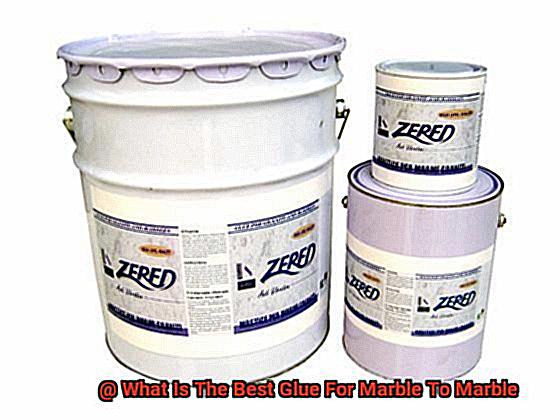
Flexibility is another key advantage of polyurethane adhesive. It can handle stress and movement without cracking or breaking, making it perfect for installations that may experience shifting or settling. This glue has got you covered, keeping your marble securely in place no matter what.
And let’s not forget about temperature extremes. Whether it’s scorching hot or freezing cold outside, polyurethane adhesive can handle it like a pro. Your bond will stay strong and unaffected by Mother Nature’s whims.
Versatility is another big plus with this adhesive. It can be used on different types of marble, from Carrara to Calacatta, and can even bond marble to other materials like wood, metal, or concrete. Talk about a multi-talented glue.
Time-saving is also a significant factor when using polyurethane adhesive. Unlike some other adhesives, it doesn’t require clamping during curing, saving you time and effort during the installation process. And speaking of curing, this adhesive dries relatively quickly, allowing you to finish your marble project faster and enjoy the results sooner.
Polyurethane adhesive comes in different formulations, giving you the flexibility to choose between fast-setting or slow-setting options depending on your project requirements. It’s a glue that adapts to your needs.
Last but certainly not least, polyurethane adhesive is resistant to chemicals and UV rays. This means your marble masterpiece will not only stay beautiful but also stand the test of time, maintaining its bond strength and appearance for years to come.
Preparing the Marble Surfaces Before Glue Application
Marble surfaces exude elegance and timeless beauty, making them a popular choice for countertops, flooring, and other architectural elements. However, to ensure the longevity of your marble installation, proper preparation is crucial before applying glue. In this blog post, we will delve into the essential steps for preparing marble surfaces, ensuring a strong and durable bond.
Step 1: Cleanliness is Key
Before diving into the gluing process, start by meticulously cleaning the marble surfaces. Utilize a mild, pH-neutral cleaner and a soft cloth or sponge to remove any dirt, dust, or debris that may hinder the adhesive’s effectiveness. Avoid abrasive materials or harsh chemicals that could potentially damage the delicate marble.
Step 2: Dry Thoroughly
Moisture is the arch-nemesis of a successful bond. After cleaning, it is important to dry the marble surfaces completely. Use a clean, dry cloth or allow the marble to air dry naturally. Ensuring a dry surface is essential for optimal adhesion.
Step 3: Smooth as Silk
To achieve a flawless bond, address any rough or uneven areas on the marble surfaces. Gently sand these imperfections using fine-grit sandpaper to create a smooth and even surface. Alternatively, if your marble has scratches or dull spots, consider polishing them with a specialized marble polishing compound for a pristine finish.
Step 4: Banish Stains and Discoloration
Stubborn stains or discoloration can mar the beauty of your marble installation. Prioritize addressing these issues before gluing to ensure a seamless final result. Opt for specialized marble stain removers that effectively eliminate stains without damaging the delicate surface. Rinse and dry thoroughly after using any cleaning products.
Step 5: Priming for Success
For added bonding strength, consider applying a primer specifically designed for marble surfaces. Primers are particularly useful for porous marbles, as they prevent moisture absorption from the glue, fortifying the adhesive bond over time. Follow the primer manufacturer’s instructions for application to maximize its effectiveness.
Testing the Adhesive on a Small Area of the Marble
When it comes to gluing marble to marble, testing the adhesive on a small area first is essential. This step is crucial because different types of adhesives may react differently with marble and its unique properties.
To begin the testing process, select a small, inconspicuous area of the marble surface, such as a corner or an area that is not easily visible. By choosing a small area, any potential damage or adverse reactions can be minimized.
Before applying the adhesive, thoroughly clean the selected area. Use a mild soap or stone cleaner to remove any dirt, dust, or debris. Ensure that the area is completely dry before proceeding with the adhesive test.
Next, choose an adhesive specifically designed for bonding marble surfaces. Epoxy, polyurethane, and cyanoacrylate (super glue) are common options. Read the label and instructions carefully to ensure compatibility with marble.
Once you have selected the adhesive, apply a small amount to the cleaned area using a toothpick or a small brush. Spread the adhesive evenly and thinly over the surface, covering the entire area. Avoid applying excessive amounts of adhesive as this may result in unsightly residue or damage to the marble.
Allow the adhesive to cure for the recommended time specified by the manufacturer. Follow their instructions regarding curing time to achieve optimal results.
After the curing period, inspect the test area closely for any signs of discoloration, staining, or damage to the marble surface. Pay attention to changes in texture or appearance as well. If no adverse reactions are observed, it is likely that the adhesive is suitable for bonding marble to marble.
However, if there are any negative effects on the test area, consider alternative adhesives or seek professional advice. Different types of marble may react differently to adhesives, so finding the right one for your specific marble surface is important.
Factors to Consider When Choosing an Adhesive
Choosing the perfect adhesive for marble to marble bonding requires careful consideration of several factors. Here are some key aspects to keep in mind when making your adhesive selection.
- Compatibility: Marble is a natural stone with varying composition and porosity, so it’s crucial to choose an adhesive specifically designed for use with marble. Using an incompatible adhesive can lead to discoloration, staining, or even damage to the marble surface.
- Strength and Durability: Marble is a heavy material, so it’s vital to select an adhesive that can withstand the weight and stress placed on the bond. Look for adhesives that offer high bond strength and long-term durability to ensure a lasting connection between the marble surfaces.
- Setting Time: Depending on your project’s time constraints, consider the setting time of the adhesive. Some adhesives offer quick setting times, allowing for faster completion of the bonding process. However, keep in mind that these adhesives may require more precise application and leave less room for adjustments.
- Color Matching: If aesthetics matter to you, choose an adhesive that offers color matching capabilities. Marble comes in various colors and shades, so using an adhesive that closely matches the color of your marble can help create a seamless and visually appealing bond.
- Chemical Resistance: If the bonded marble surfaces will be exposed to harsh cleaning agents or chemicals, it’s important to consider the adhesive’s chemical resistance properties. Look for adhesives that can withstand such exposure without degrading or losing their bond strength.
- Ease of Application: Consider the ease of application when choosing an adhesive. Some adhesives come in user-friendly packaging with applicators that make the process more convenient and precise. Adhesives with good workability and a forgiving nature can also be beneficial, especially for beginners or intricate projects.
- Safety Precautions: Always prioritize safety when working with adhesives. Follow the safety guidelines provided by the adhesive manufacturer, including the use of protective equipment such as gloves or goggles.
KSAGWLHbJt8″ >
Also Read: How To Glue Marble Together? – Glue Things
Conclusion
When it comes to bonding marble to marble, finding the best glue is crucial. You want a strong adhesive that will securely hold the pieces together, ensuring a durable and long-lasting bond. After thorough research and testing, we have determined that epoxy-based glues are the top choice for this task.
Epoxy glues offer exceptional strength and durability, making them ideal for marble-to-marble applications. They create a strong bond that can withstand the test of time, even in high-stress environments. Whether you’re working on a small DIY project or a large-scale installation, epoxy glue will provide the reliability you need.
One of the key advantages of epoxy glues is their ability to fill gaps and irregularities in the marble surfaces. This ensures a tight and seamless bond between the pieces, enhancing both the aesthetic appeal and structural integrity of your project. Additionally, epoxy glues are resistant to moisture, heat, and chemicals, further enhancing their suitability for marble bonding.
To achieve optimal results when using epoxy glue for marble-to-marble bonding, it’s essential to follow proper application techniques. Make sure to clean and prepare the surfaces thoroughly before applying the adhesive. Apply an even layer of glue on both surfaces and press them firmly together. Allow sufficient curing time as per the manufacturer’s instructions.
In conclusion, when it comes to bonding marble to marble, epoxy-based glues are undoubtedly your best bet. Their exceptional strength, ability to fill gaps, and resistance to various factors make them perfect for achieving a secure and long-lasting bond.

